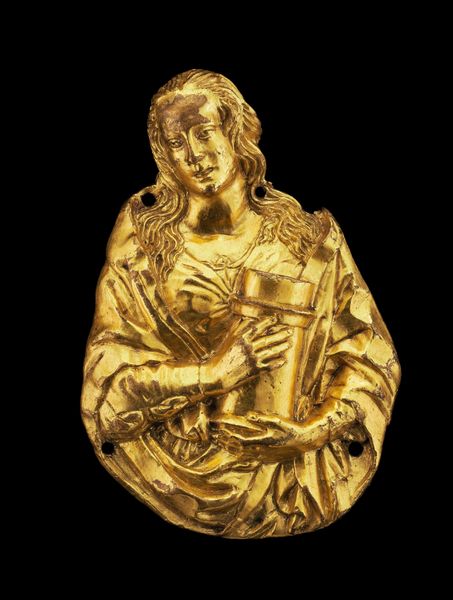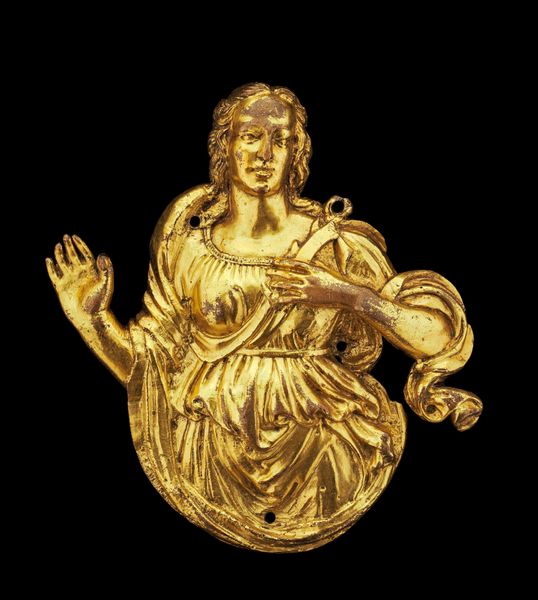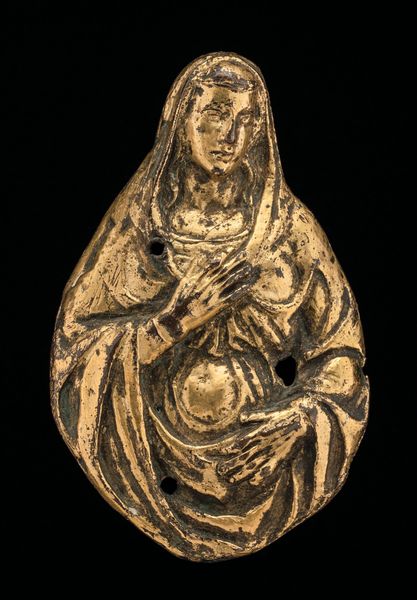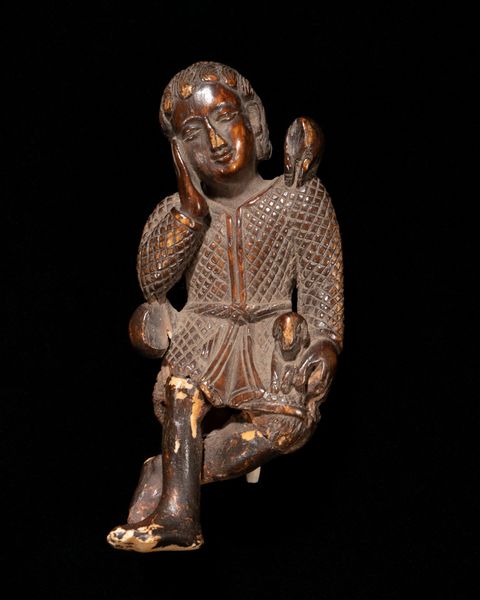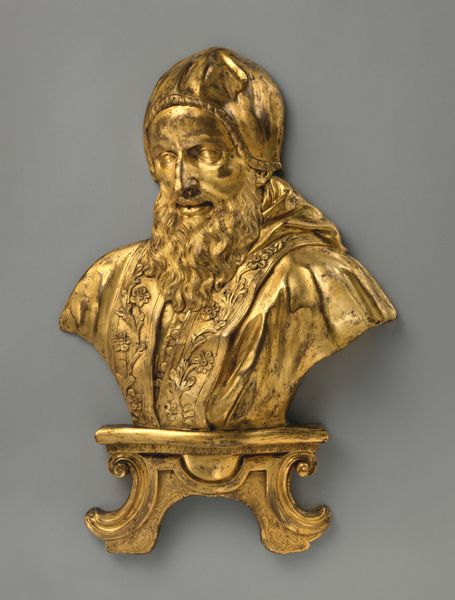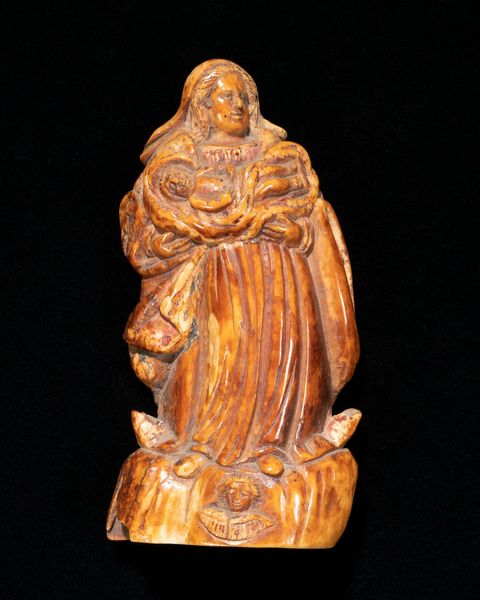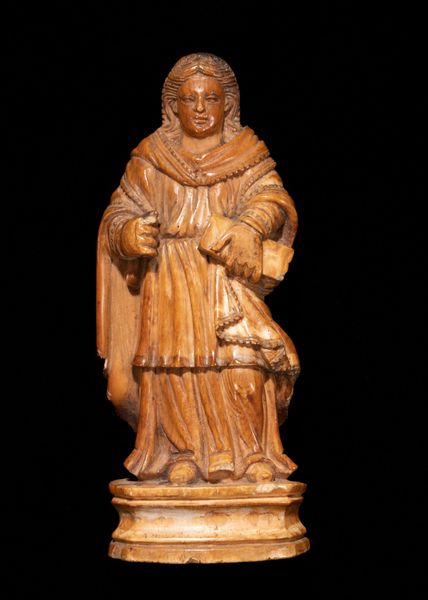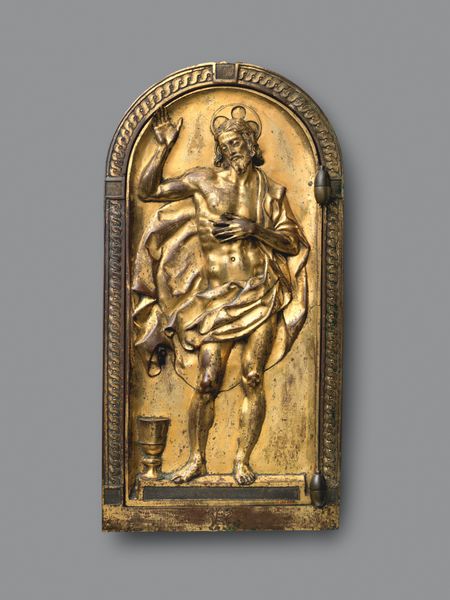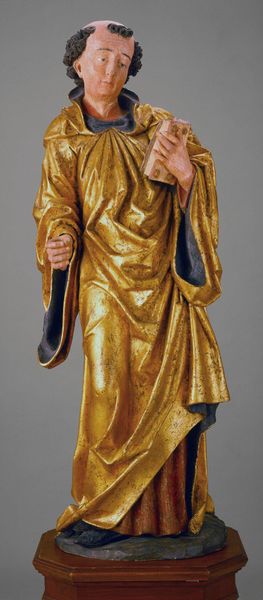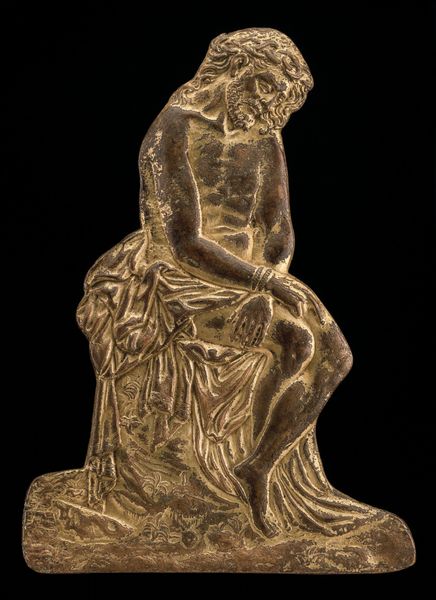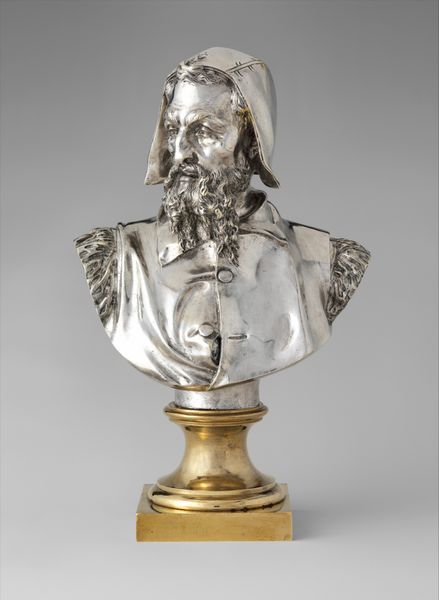
carving, metal, bronze, sculpture
#
portrait
#
medieval
#
carving
#
metal
#
stone
#
sculpture
#
bronze
#
figuration
#
11_renaissance
#
sculpting
#
sculpture
Dimensions: overall (silhouetted contour): 8.4 x 6.2 cm (3 5/16 x 2 7/16 in.) gross weight: 82 gr
Copyright: National Gallery of Art: CC0 1.0
Francesco Marti created this gilded bronze statuette of a male saint in Italy around the early 16th century. The figure’s serene expression and classical drapery are typical of the Renaissance. But what was the public role of such devotional imagery at this time? Well, the Catholic Church was a major patron of the arts, using images of saints to inspire piety and reinforce its authority. This was a period of intense religious and political change with the rise of Protestantism challenging traditional beliefs. An artwork like this, therefore, represents an attempt to reassert traditional values. To fully understand its meaning, we would need to investigate the religious, social, and economic conditions of the time. Researching patronage records and theological debates would help us understand the complex interplay of art, religion, and power in Renaissance Italy. Art is never made in a vacuum and a deeper appreciation requires an understanding of its historical context.
Comments
No comments
Be the first to comment and join the conversation on the ultimate creative platform.

